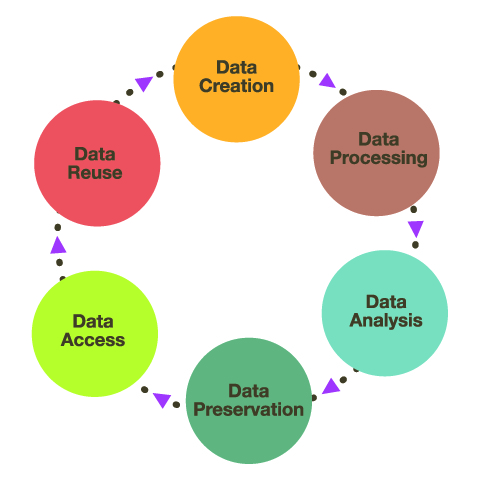

The research data lifecycle model describes and identifies the steps to be taken at the different stages of the research cycle to ensure successful data curation and preservation. There are several stages in the research data lifecycle, e.g. data creation, data processing, data analysis, etc.
There are a few models that one can make use to plan the data management activities, for example, DCC Curation Lifecycle Model (see also journal article about "The DCC Curation Lifecycle Model" by Sarah Higgins).
Pennock (2007) highlighted in Digital Curation: A Life-Cycle Approach to Managing and Preserving Usable Digital Information that the lifecycle approach is necessary because:
Each stage of a research data lifecycle may comprise many small activities. For example, data creation may involve new data collection, reuse of existing data, capturing and creating metadata.
When you are considering the use of relevant existing research data, it would be useful to know which research data repositories to look.
More on Searching for existing third-party data
Further readings:
A portion of the content is collaboratively developed with NUS and SMU Libraries.
This 6 miniutes video introduces data lifecycle and searching for data. It is part of the video tutorial on practical data management, created by University of California Santa Cruz Library.
You are expected to comply with University policies and guidelines namely, Appropriate Use of Information Resources Policy, IT Usage Policy and Social Media Policy. Users will be personally liable for any infringement of Copyright and Licensing laws. Unless otherwise stated, all guide content is licensed by CC BY-NC 4.0.